Crab apple trees are known for their beautiful spring blossoms and attractive fruits. However, some homeowners find them messy when the flowers, fruits, leaves, and branches fall and litter the ground. So are crab apple trees really messy? Let’s take a closer look.
What Makes Crab Apples Messy
There are a few key characteristics of crab apple trees that contribute to them being considered messy by some people
-
Flower Petal Drop: Crab apples produce stunning flowers in spring, but once blooming ends, the petals fall and can cover the ground around the tree.
-
Fruit Drop The fruits mature and drop in late summer/fall. Fallen crab apples can create a slippery mess especially near walkways.
-
Leaf Drop Like other deciduous trees, crab apples shed their leaves in autumn. This leaf litter needs clearing.
-
Branch and Twig Drop: Dead branches and twigs often fall, especially after storms.
Factors Impacting Mess Levels
However, not all crab apple trees are equally messy. Here are some factors that affect messiness:
-
Tree Variety: Some varieties are bred to be less messy with smaller, persistent fruits. Others have sterile flowers that don’t produce much fruit.
-
Tree Size and Age: Larger, older trees tend to be messier with more flowers, fruit, leaves, and debris.
-
Pruning and Care: Proper pruning and care encourages healthy growth and less branch/twig drop.
-
Disease/Pest Resistance: Disease-prone trees drop more leaves and branches.
-
Climate and Weather: High winds, rain, and storms increase flower petal and branch/twig drop.
Tips for Managing Mess
Here are some tips for minimizing mess from crab apple trees:
-
Choose less messy varieties like ‘Spring Snow’ and ‘Sugartyme’ that have persistent fruits.
-
Locate trees away from high-traffic areas like walkways.
-
Prune annually to remove dead wood and encourage good tree structure.
-
Rake/blow away flower petals, fruits, leaves, and debris as needed.
-
Apply preventative fungicide/pesticide sprays for disease/pest resistance.
-
Accept some mess as part of enjoying these beautiful flowering trees.
-
Plant crab apples in low-maintenance places like borders and woodland settings.
Are Crab Apples Worth the Mess?
For most homeowners, the spectacular spring blossoms and attractive fruit make crab apples worth the bit of cleanup required. Proper variety selection and tree care reduces messiness. And the short duration of fruit and flower drop is a fair tradeoff for months of beauty from these small flowering trees.

Pros of Crabapple Trees
- Different Colors and Shapes: Crabapple trees come in a beautiful array of colors and shapes, which makes them very popular for garden and landscaping design. There is a crabapple flower color for everyone, whether you like pink, white, or red flowers. Their different shapes, from weeping to upright, also give garden and park designers a lot of options.
- Adaptability to Drought: Once they are established, crabapple trees can handle short periods of drought very well. Because they are so flexible, they can grow in a wide range of climates and don’t need to be watered all the time, which is good for places where water is scarce or for gardeners who want to save water.
- Interest During Different Seasons: Crabapple trees are beautiful all year, which makes them a great addition to any yard. In the spring, they have lots of flowers, and in the fall, their leaves change colors that look nice. The shape of their branches adds a unique beauty to the landscape even in the winter.
- Wildlife Benefits: These trees are very good for wildlife, especially in the spring and summer. Bees and other pollinators get nectar from their blossoms, and birds eat the crabapples in the fall, making them an important food source for wildlife in the area.
- Fragrant Blossoms: Many types of crabapples have a lovely scent, ranging from the classic apple blossom scent to exotic Oriental scents like cinnamon or cloves. This feature improves the way gardens and public spaces look and feel, making them more welcoming and enjoyable.
- Sizes: Crabapple trees come in a range of sizes, from small, tight ones to bigger, more impressive ones. Because they are so flexible, they can be used in a wide range of landscape designs, from small gardens in cities to large parks.
- Beautiful Fall Leaves: Crabapple trees have beautiful fall leaves as well as flowers in the spring. An amazing burst of color can be seen in the fall when the leaves turn bright shades of yellow, orange, or red.
- Low Maintenance After Establishment: Once they are established, crabapple trees don’t need much care. Because of this, they are a good choice for both amateur and professional gardeners.
- Disease-Resistant Varieties: Some crabapples are easily sickened, but many modern cultivars have been bred to be less likely to get sick. This new development lets gardeners enjoy the beauty of crabapples without the high risk of problems caused by diseases.
- Increases Property Value: Crabapple trees, with their pretty flowers and changing leaves, can make a house look better from the street and raise its value dramatically. They contribute to a well-landsc.
caped, attractive home environment, appealing to both residents and potential buyers.
Cons of Crabapple Trees
- Disease Proneness: Apple scab and other diseases can affect crabapple trees, and pests like the Japanese beetle like to eat them. These problems can cause the tree’s leaves to fall off and its health to generally get worse. To keep the tree healthy, it needs to be checked on a regular basis and may need expensive treatments.
- Root Suckering: Crabapple trees can send out suckers from the base of their trunks, which can be a problem in landscaped areas. These suckers make the tree look bad and need to be trimmed regularly, which adds to the work of maintenance.
- Messy Fruit Drop: Crabapple trees can lose their fruit in early spring, making the ground under the tree messy and possibly slippery. This is especially bad on walkways, driveways, and lawns, which need to be cleaned up regularly to keep things looking neat.
- View Blocks: Crabapple trees with few branches can block views, especially if they are planted too close to buildings or in small yards. They need to be carefully placed and trimmed regularly to keep their growth under control because they can block natural light and get in the way of views.
- In the early stages, crabapple trees can handle some drought, but young trees need to be watered regularly to get established. This can be a problem in places where water is limited or for gardeners who want low-maintenance plants that can handle drought right away.
- Brings in Unwanted Animals: Crabapple trees’ fruit is good for birds and pollinators, but it can also bring in rodents and wasps that you don’t want, especially when the fruit starts to ferment on the ground. This can be annoying and could be bad for your health in residential areas.
- What kind of space do crabapple trees need? Bigger crabapple trees need a lot of space to grow. This can be a problem in small gardens or cities where it’s not possible to plant big trees.
- People with certain allergies may have allergic reactions in the spring when they breathe in the pollen from crabapple blossoms. This can be a big problem for people with allergies because it makes it harder for them to enjoy being outside during the blooming season.
- Chance of Overgrowth: If you don’t prune your crabapple trees regularly, they can get too big and look messy. Overgrowth can also make it harder for air to flow and light to reach the tree, which raises the risk of disease and pest infestation.
- Limits on How Long They Live: Crabapple trees don’t live as long as some other tree species. When making long-term plans for landscaping and budgeting, this can mean that they may need to be replaced more often.
With their beautiful flowers and bright fruits, crabapple trees have a lot of different ways to make a landscape look better. People love these ornamental trees for their beautiful flower displays. The flowers come in many colors, from soft pinks to bright reds. As interesting focal points, they add a lot to the visual appeal of the garden, especially in the spring when the flowers are in full bloom.
The aesthetic contribution of crabapple trees extends into the fall season. The trees bear brightly colored fruit that not only makes the garden look nicer but also attracts many kinds of wildlife, which increases its biodiversity. Birds, in particular, like the fruit on the trees because it gives them something to eat when it’s cold outside.
There are many kinds of crabapple trees, and each has its own flower color and tree shape. This adds to the variety in the garden. These trees can now be grown in smaller yards and urban areas thanks to the development of compact and dwarf sizes. This means that even the smallest spaces can enjoy their beauty. Additionally, crabapple trees’ unique branch patterns stand out in the winter, continuing to be aesthetically pleasing all year long.
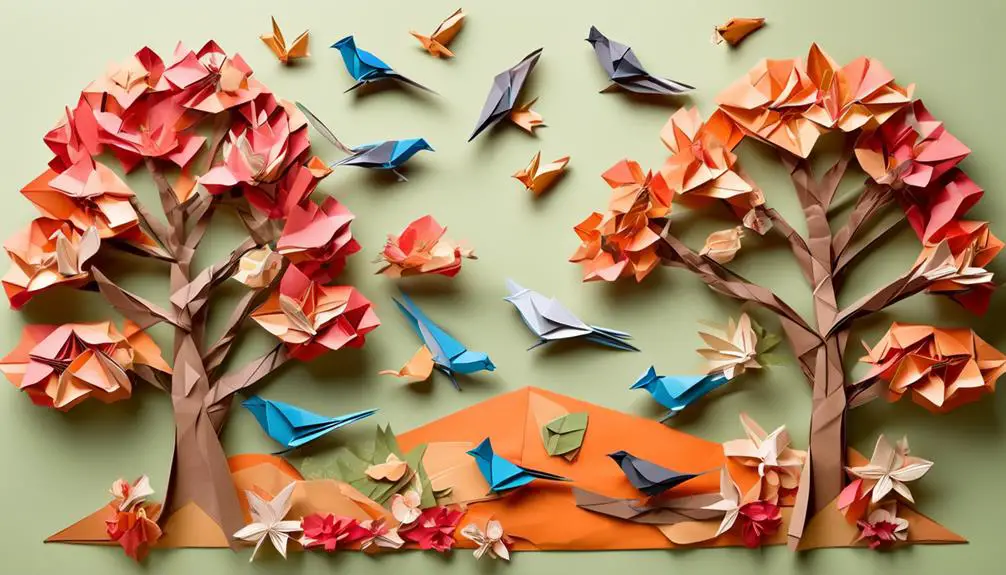
Crabapple trees are important food sources for many animals, like cardinals, cedar waxwings, bees, and butterflies. They also add to the diversity of the local ecosystem. These trees are not merely decorative; they play a crucial role in sustaining various species. Birds like robins relish the fruits, while pollinators, such as bees and butterflies, are drawn to the blossoms. This cross-visitation among flora and fauna underlines the importance of crabapple trees in pollinator conservation efforts.
However, the relationship between crabapple trees and wildlife is not without its complexities. The fallen fruit and debris necessitate regular cleanup, which can be seen as a chore by some homeowners. However, this organic litter gives animals that eat the ground another food source, turning a possible problem into an ecological benefit.
So, while the upkeep that comes with crabapple trees might put some people off, the fact that they help a lot of different kinds of wildlife is a huge plus. These trees are important for any landscape that values natural harmony and environmental responsibility because they help the local ecosystem grow and stay strong.
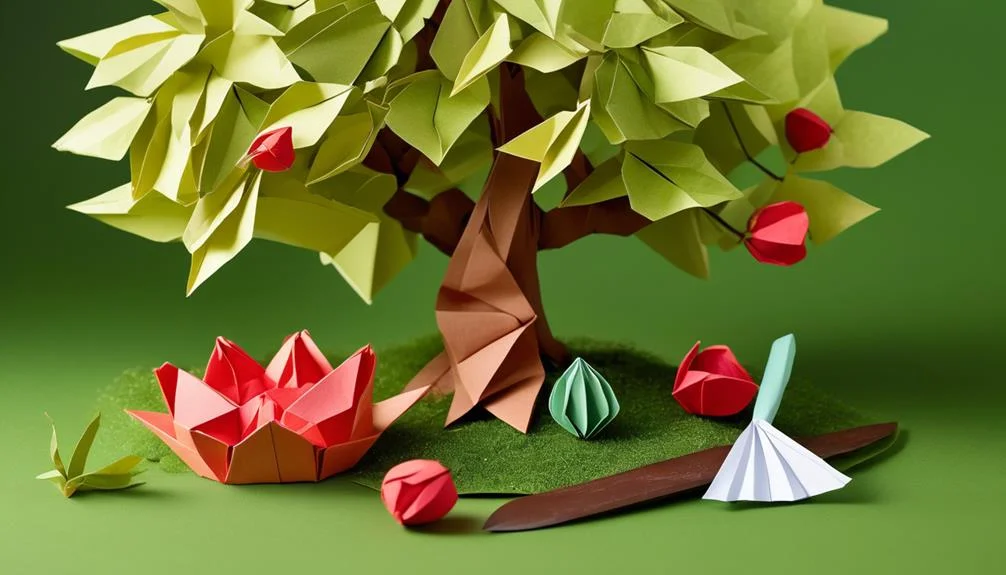
Modern varieties of crabapple trees are better at resisting disease, so they can meet the needs of low-maintenance landscaping for people who want a balance between beauty and ease of care. These hardy varieties have been selectively bred to resist common diseases that affect crabapple species, so the gardener doesn’t have to do as much. Because they are naturally hardy, these trees are appealing to people who like the way they look but don’t have time or desire to do a lot of yard work.
Once they are established, crabapple trees become sturdy garden fixtures that only need to be pruned once in a while and watered during severe droughts. Because they come in both compact and dwarf sizes, they can be used in a variety of settings, from open rural areas to crowded cities. The smaller size of these varieties means they need less care, which is great for gardeners who have to work with limited space.
However, it’s essential to note that ‘low-maintenance’ does not equate to ‘no maintenance. ’ Regular monitoring is still advisable to ensure the tree’s health and vitality. For the best care, prune the tree at the right time to shape it and get rid of any dead or diseased wood. Also, keep an eye out for signs of stress or infection. Homeowners can enjoy the lasting beauty of crabapple trees with little work if they choose disease-resistant varieties and give them basic care.
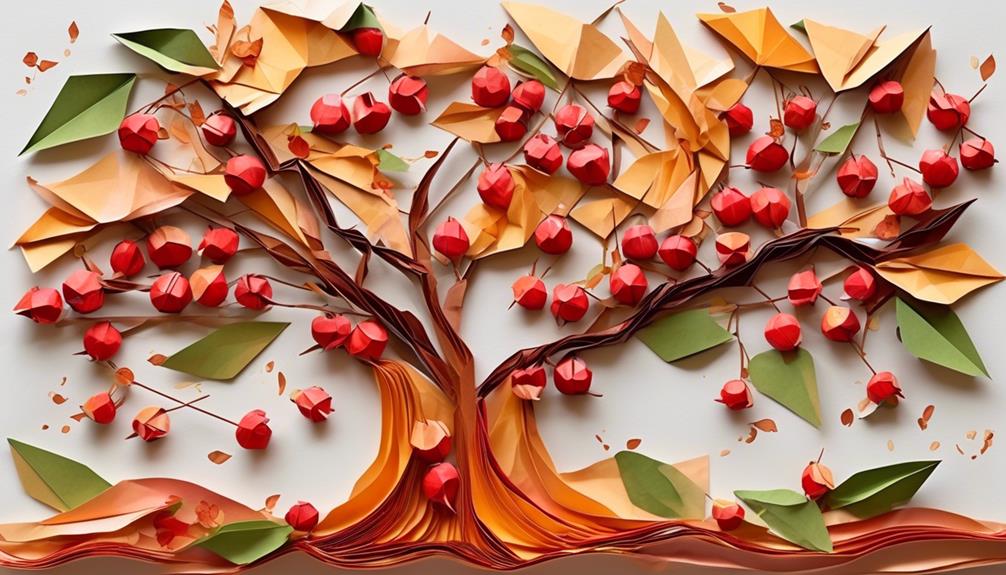
People love crabapple trees for their pretty looks, but they can be hard to take care of, especially when it comes to diseases and pests.
Apple scab and fire blight are two common diseases that can hurt these trees and make them look ugly. Pests like aphids and apple maggots can make it even harder to take care of them.
To keep their crabapple trees healthy, gardeners must choose cultivars that don’t get diseases and be very careful about how they take care of them.
Even though crabapple trees have beautiful flowers, they can get a lot of diseases and pests that hurt their health and vitality. Selecting modern varieties with improved disease resistance is crucial for maintaining their beauty and longevity.
Some crabapples, like Snowdrift and Prairifire, are very resistant to cedar apple rust and powdery mildew, which are common problems that can damage their looks and weaken their structure.
People who garden might choose the Sargent crabapple or the Sugar Tyme® variety for better protection against a wider range of threats, such as fireblight and apple scab. Royal Raindrops and Prairifire are particularly adept at avoiding apple scab issues.
To keep your trees healthy, it’s best to pick crabapple trees that are resistant to the diseases that are common in your area.
Even though crabapple trees are very pretty, they are constantly being attacked by pests and diseases that can hurt their health and make them less useful as decorations. To maintain the integrity of these trees, it is crucial to be aware of the following threats:
- Apple diseases like apple scab, fire blight, and powdery mildew can damage the leaves and fruit, making them look less attractive.
- Pests like aphids, caterpillars, and apple maggots can do a lot of damage to trees, making them less healthy.
- Different types of crabapples may be more likely to get certain diseases and pests.
Proactive maintenance and vigilant care are key to preventing and managing these issues. If you choose disease-resistant varieties and follow good gardening practices, you can greatly lower the risk of pest and disease problems.
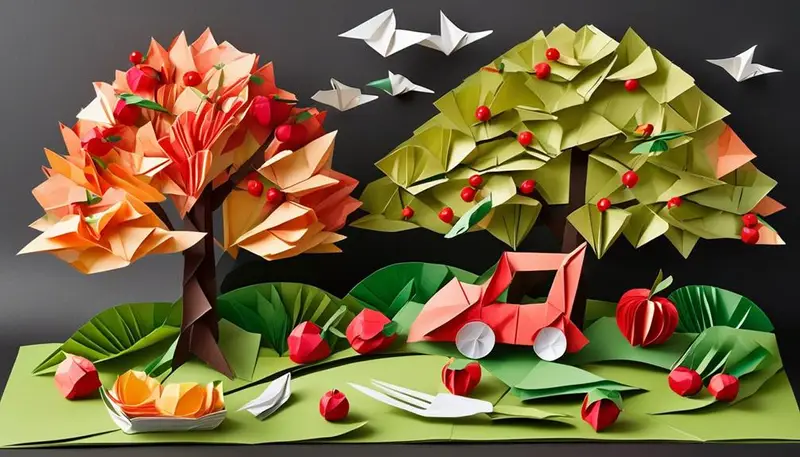
Even though crabapple trees are known for their ornamental beauty, their fruit drop makes them a pain to clean up every so often. Even though crabapple trees are smaller than many other fruit trees, they still produce a lot of fruit that falls to the ground. This fruit that has fallen can make a mess that needs to be cleaned up all the time, especially in residential areas where looks are important.
Homeowners should thoughtfully consider the placement of crabapple trees on their property. If the trees are near walkways or areas with a lot of foot traffic, the falling fruit could cause people to slip and need to be cleaned up even more often. This is not only a matter of tidiness but also of safety.
Also, animals may come to areas with fallen fruit, which is good for the ecosystem but may mean more work to clean up afterward because the animals may leave behind trash and partially eaten fruits. The appeal of wildlife must also be controlled so that unwanted pests don’t get too comfortable in homes.
On the plus side, crabapple trees tend to make smaller fruits, which might make a little less of a mess than bigger fruit trees. Still, the problem of fruit litter is something that people who want to plant crabapple trees on their property should think about.
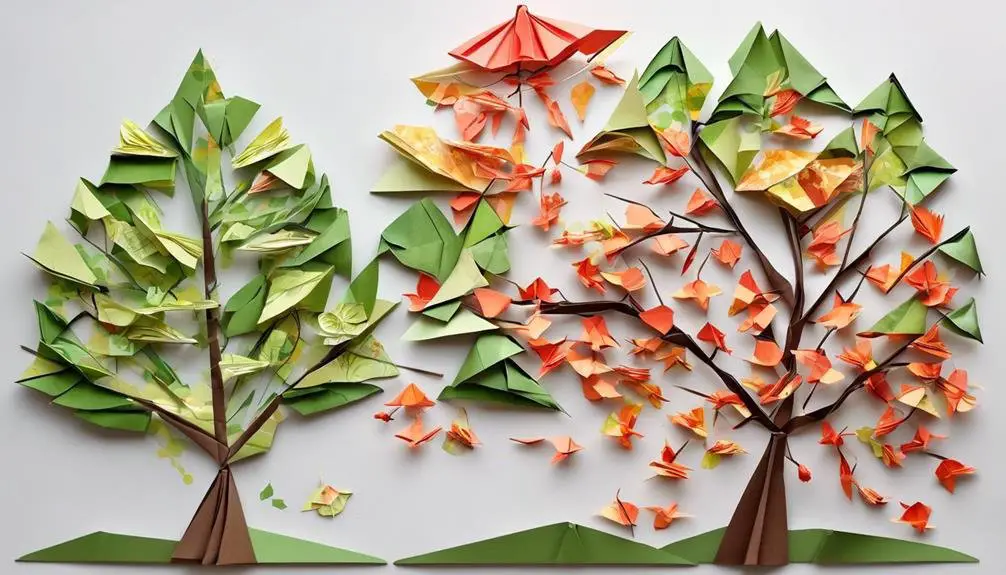
Many gardeners like how crabapple trees can be grown in a variety of sizes, from small to very small, making them easy to fit in even the smallest gardens. You can put these trees in a lot of different places, and they are known for being hardy and growing quickly. Modern breeding has made them more resistant to disease, making them stronger trees that need less care. This makes them a good choice for both new and experienced gardeners.
The growth and hardiness of crabapple trees can be characterized by several key points:
- Sizes: They come in a range of sizes that work for a variety of areas, from small gardens in cities to large landscapes.
- Disease Resistance: Newer varieties are less likely to get common tree diseases, so you don’t have to use as many chemicals to treat them.
- Year-Round Interest: The changing leaves and branch patterns on these trees make them look nice all year long.
- Wildlife Attraction: They provide a natural habitat and food source for many bird species, which is good for the local ecosystem.
- When does a crabapple tree become fully grown? It usually takes between 5 and 10 years, but this depends on the environment and how well it is cared for.
Reducing The Mess your Crabapple Tree Makes
Are crabapple trees messy?
Crabapple trees can be considered messy by some people because they drop their fruit in the fall. The fallen fruit can litter lawns and sidewalks and may attract wildlife. Some varieties of crabapple trees hold onto their fruit well into the winter, which can minimize the mess.
Can crabapples pollinate apple trees?
Pollen from a crabapple tree will pollinate most apple trees provided that they blossom at the same time. – While crabapple trees are capable of self-pollination, having two or more different varieties
Do crabapple trees produce fruit?
Yes, all crabapple trees produce fruit, but the size, color, and abundance of the fruit can vary significantly between different varieties. The fruit of crabapple trees, like all apple trees, develops from pollinated flowers. Therefore, a crabapple tree will only produce fruit if its flowers are pollinated.
What kind of apples grow on a crabapple tree?
Royal Raindrops crabapple trees. Magenta-pink blooms appear in mid-spring on crabapples ‘Royal Raindrops.’ This crabapple species has unusual deeply-lobed leaves and produces tiny apple fruits. Lollipop crabapple trees. Spectacular white flowers spear in spring. This dwarf apple tree has upward growing branches and small amber-colored apples.
